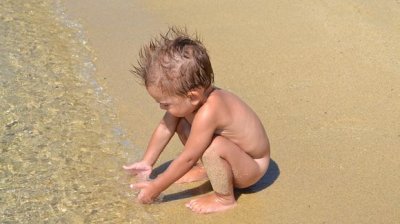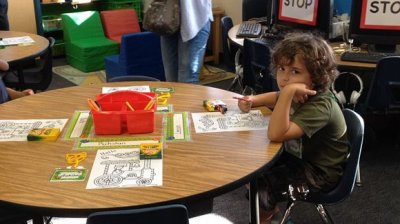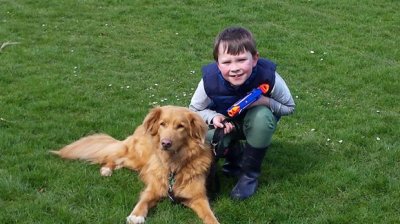小学六年级英语下册单词
小学六年级英语下册单词,想要英语学习好,单词的积累是少不了的。但是英语单词的数量有很多,在其中还有很多词组需要进行记忆,所以我们应该掌握好的记忆方法,通过对单词进行整理使自己更简单的记忆。下面是大思英语小编为大家总结的小学六年级英语下册单词。

小学六年级英语下册单词
Unit One
1. on Sunday morning 在星期天早晨
2. go for a walk 去散步
3. be glad to see them 很高兴见到你
4. under a big tree 在一棵大树下
5. have a chat 聊天
6. a twin sister 双胞胎姐姐/妹妹
7. look the same 看上去一样
8. as tall as 和……一样高
9. twenty minutes younger than… 比……小二十分钟
10. want to do sth. 想做某事
11. one day 有一天
12. the one child in my family 我家的独生子
13. the man in black 穿着黑色衣服的男人
14. Who’s younger, you or Su Yang? 谁年龄小,你还是苏扬?
15. Do you have any brothers or sisters? 你有兄弟姐妹吗?
16. He’s one year younger than me. 他比我小一岁。
17. You’ve got a brother. 你有一个哥哥。
18. I’m taller than Su Yang. 我比苏扬高。
19. Who’s taller than David? 谁比David高?
20. Whose school bag is heavier, yours or mine? 谁的书包重,你的还是我的?
Unit Two
1. be good at 擅长
2. do well in 在……方面做得好
3. talk to sb. about sth. 和某人谈有关某方面的情况
4. need help with… 在……方面需要帮助
5. run faster than… 比……跑得快
6. a good football player 一位好的足球运动员
7. some of the boys 其中一些男孩
8. Don’t worry. 不用担心。
9. do some exercise 做练习/做运动 do more exercise 多做练习/运动
10. get stronger 变得更健壮
11. jog to school 慢跑去学校
12. play ball games 玩球类运动
13. all of us 我们所有人
14. be late for school 上学迟到
15. What’s the matter? 怎么了?
16. I’ll get up earlier every day and do some exercise before I go to school.
我会在每天早点起床,上学前做些运动。
17. Please don’t be late again. 请下次别迟到。
18. Shall we start our lesson now? 我们现在开始上课吧?
19. You have five minutes to remember them. 你们有五分钟的时间来记住他们。
Unit Three
1. Excuse me, can you tell me the way to …? 请问,你能告诉我去……的路吗?
2. go along this street 沿着这条街走
3. turn right/left 向右/左拐
4. at the first crossing 在第一个十字路口
5. on your left/right 在你的左/右边
6. take bus No. 5 坐5路车
7. a long walk 走一段很长的路
8. every five minutes 每5分钟
9. in front of 在……前面
10. get off 下车 get on上车
11. at the third stop 在第三站
12. the History Museum 在历史博物馆
13. a shopping centre 购物中心
14. a post office 邮局
15. a middle school 中学
16. a primary school 小学
17. a train station 火车站
18. last Sunday afternoon 上个星期天下午
19. a book about animals 有关动物的书
20. run out of 跑出……
21. stop thief 抓贼
22. start to run 开始跑
23. get sth. back 把某物拿回
24. come to help 来帮忙
25. He’s asking Yang Ling how to get there. 他在问杨凌怎么去那儿。
26. You can’t miss it. 你不会错过的。
27. How far is it from here? 离这儿有多远?
28. It’s about a kilometer away. 大约一公里远。
Unit 5
1. be going to do sth 将做某事
2. next week 下个星期
3. for one year 有一年的时间
4. want to know about sth 想知道某事的情况
5. What’s the weather like…? 天气怎样?
6. in spring/summer/autumn/winter 在春天/夏天/秋天/冬天
7. in the countryside 在乡村
8. Sounds great! 听起来很棒!
9. most of the time 大部分时间
10. make snowmen 做雪人
11. It’s great fun. 这很有趣。
12. warm clothes for winter 冬天穿的保暖衣服
13. go rowing and fishing 去划船钓鱼
14. go jogging 去小跑
15. It’s usually very hot, as hot as in Nanjing. 通常很热,很南京一样热。
16. What about…? ……怎么样?
17. Does it often rain there in spring? 春天经常下雨吗?
18. There’s a lot of rain in spring. 在春天雨水很多。
19. Which season do you like best? 哪个季节你最喜欢?
20. turn green 变绿
21. get shorter 变短
22. go swimming 去游泳
Unit 6
1. have school 上课,有课
2. talk about 谈论
3. see a Beijing opera 看京剧
4. this afternoon 今天下午
5. Would you like to join us? 你想和我们一起去吗?
6. by the way 顺便说/问一下
7. at the concert 在音乐会上
8. play the violin/piano 拉小提琴/弹钢琴
9. have a picnic 进行野餐
10. go on an outing 去远足
11. see a play 看戏
12. take part in… 参加
13. a singing contest 歌咏比赛
14. a sports meeting 运动会
15. have a class outing 进行班级远足
16. class project 班级课题
17. at the bus stop 在公共汽车站
18. come home 回家
Unit 7
1. yesterday afternoon 昨天下午
2. some writing paper 一些信纸
3. What for? 为什么
4. write a letter 写信
5. listen to music 听音乐
6. make model planes 制作模型飞机
7. have the same hobbies 有同样的爱好
8. I hope so. 我希望如此。
9. tell sb about sth. 告诉某人有关某事的情况
10. of course 当然
11.a fax machine 传真机
12. a telephone number 电话号码
13. write to sb 给某人写信
14. collect stamps 收集邮票
15. draw a picture 画画
16. make a kite 做风筝
17. do one’s homework 做回家作业
18. ask for 要求
19. some other subjects 一些其他课程
20. finish primary school 小学毕业
21. go to middle school 上中学
22. know everything about 了解有关……的一切
23. penfriend club 笔友俱乐部
24. with best wishes 祝好
小学六年级英语下册单词。英语的学习,教案是老师教学的重要准备,明确教学目的、任务,体现教学内容的重点、难点,这都是一个优秀的教学设计应该做到的,下面给大家带来小学六年级英语课文教案-What a day,大家看一看这篇教案,对大家有帮助。

1.学生分析
六年级学生的语言已经发展到了一定的水平,但是空间思维能力和方向感还比较弱。而本课时的教学既有turn left,turn right等表示左右的词汇,又有east, south, west, north等表示东、南、西、北的词汇,学生学习运用起来会比较吃力。因此,在设计本堂课的时候,本人把east, south, west, north 四个词移到下一课Let’s talk中去教学,而在本课中增加了crossing,要求学生基本学会用Go straight,turn left at the first crossing, go straight on, turn left at the traffic lights, it’s on your left等语言来指路。
2.教学内容
词汇:turn left,turn right,go straight,crossing
句型:Go straight,turn left at the first crossing, go straight on, turn left at the traffic lights, it’s on your left
3.教学目标
(1)知识目标:
①能够听、说、认读词汇:turn left,turn right,go straight,crossing
②能够听、说、认读句型:Go straight,turn left at the first crossing, go straight on, turn left at the traffic lights, it’s on your left
(2)能力目标:
①能够基本学会帮人指路。
②培养学生的方向感和空间思维能力。
(3)情感目标:培养学生乐于助人的好品质。
4.教学重点、难点
(1)教学重点:
①能够听、说、认读词汇:turn left,turn right,go straight,crossing
②能够听、说、认读句型:Go straight,turn left at the first crossing, go straight on, turn left at the traffic lights, it’s on your left
(2)教学难点:使学生能够分清左右,并能正确指路。
5.教学准备
(1)制作多媒体课件。
(2)每组准备两张地图:一张教室模拟小镇平面图,一张美国小镇平面图。
(3)教室场景布置:整个教室为一个模拟小镇,每个小组为一个具体的场所,其间还有十字路口和交通灯。
二、教学过程:
Step 1: Warm-up (2’)
介绍教室场景:
T: Today, our classroom is a small town. This is a post office. Here is a bank. …
Are you clear?
Ss: Yes.
[设计意图]
通过对教室场景的介绍,复习了所学场所的名称,使学生熟悉了模拟小镇的布局,为后面在小镇中准确找方位做好准备。同时,也使学生仿佛真的置身于一个小镇之中,从心理上进入了教学情境,并对这堂课充满了期待。
Listen and do.
T: Now, please listen and do. Touch your nose. Touch your eye. …(发令速度渐快)
Touch your right ear. Touch your left ear. Touch your right eye. …
[设计意图]
通过听听、做做,让学生热身、放松,同时也初步感知左右,特别是随着老师发令速度的加快,学生会变得越来越兴奋,越来越投入。
Step 2: Presentation
教学新词汇:turn left, turn right, go straight
(1)随着听做活动的继续,新的教学内容开始呈现:
T: Stand up, please. Show me your right hand. Turn right. Show me your left hand. Turn left. Go straight. (2’)
(2)当学生基本上能按照老师的口令做动作之后,请两个学生试着发令,教师跟其他学生一起做动作。(2’)
(3)多媒体一一呈现表示左转、右转、直行的图片,教师问:What does it mean?,学生一一作答,教师呈现词汇,并让学生以各种形式认读新词汇。(3’)
[设计意图]
通过简单听做到感知左右,再利用左右手搞清左转、右转和直行,然后考察口头语言输入的有效性,最后呈现新词汇并学习新词汇,从听做、听说到读,使得一切都水到渠成,丝毫不会让学生感到为难。
教学新词汇:crossing
(1)游戏:Find the treasure (2’)
T:(教师拿出一个宝盒)Now, let’s play a game: Find the treasure. OK?
Ss: OK.
T: Who wants to find the treasure?
(教师请一名学生上来,面对黑板,然后把宝盒藏到小镇的某一个地方。)
T: Now, please listen. Turn left, go straight, turn left, go straight, turn right…(直到找到宝盒)
(2)教学新词汇:crossing (3’)
当该学生找到宝盒之后,请他打开看看里面有什么宝贝。
T: What’s in the treasure box? Open it and see.
S1: It’s a paper.
T: What does it say?
S1: It says: Find the near the bank. Find the treasure.
T:(教师通过投影,指着十字路口的图形)What does it mean?
(多媒体出示十字路口图形和单词,教师领读并让学生以小组形式齐读。)
T: How many crossings are there in our town?
Ss: Four.
T: Where is the bank?
S2: It’s here.
T: How can I get to the crossing?
Ss: You turn right, go straight, turn left, go straight…
T: Who can help me go to the crossing and find the treasure?
教师请一名学生根据指令找宝藏。
T:(当那名学生找到了银行旁边的十字路口。)Can you find the treasure?
S3: It’s an envelope.
T: Open it and see.
S3: It’s a paper, too. It says: Find the near the bookstore. It’s under the .
T:(教师通过投影,指着交通灯的图形)What does it mean?
(多媒体出示交通灯图形和单词,教师领读并抽部分学生读。)
T: How many traffic lights are there in our town?
Ss: Two.
T: Where is the bookstore?
S4: It’s here.
T: How can I get to the traffic lights?
Ss: You turn left, go straight, turn right, go straight…
T: Who can help me go to the traffic lights and find the treasure?
教师再请一名学生根据指令找宝藏。
[设计意图]
通过Find the treasure这个游戏,学生复习了turn left, turn right, go straight三个词汇,并借助教室里的模拟场景分清左右,慢慢学会正确指方向。同时,在游戏中还进行了新词汇crossing的教学,学生要找到宝藏,必须破解藏宝图的密码,从而学习了新词汇。这种探险小说里才有的寻宝活动在课堂中进行了演绎,学生参与热情高涨。学习英语是为了更好地完成寻宝任务,学生愿学、乐学,也体现了任务型教学的理念。
Step 3: Consolidation (6’)
1. 阅读活动
T:(学生在交通灯下面找出宝藏)What is the treasure? (教师接过宝藏,在投影中展示)It is from Air China, free tickets to the USA.
Ss: Wow!
T: What a surprise! Do you want to go to the USA?
Ss: Yes.
T: But you have to pass a test first. Look at the tasks, group 1, 2 and 3 finish task one. …
(多媒体出示三个阅读任务,学生以小组为单位,边读边在地图上找相应的场所,地图为教室里模拟小镇的平面图。)
Task example:
Now, you are at the hotel. You turn left at the hotel gate, go straight, turn right at the
2. 实践检验
学生完成阅读任务后,教师分别请三个不同任务的小组在模拟小镇中实践检验阅读成果。
[设计意图]
这个阅读活动是对新学语言的巩固,也为学生提供了给人指路的语言范例,为接下去的指路活动做好了铺垫。同时,这也是训练学生思维的一个过程,从原来在教室里的模拟小镇中找路过渡到了在平面图上找路,思维活动更为抽象,促进了学生空间思维能力的发展。
Step 4: Extension
1.引入拓展活动 (2’)
T: Now, it’s time for us to go to the USA. I have a friend in the USA. Her hometown is very nice. Let’s go to her hometown, OK?
Ss: OK.
T: Let me call her first.(拿出电话与在一旁听课的外教通话)
Hello! Molly. This is Lin. I’m very excited. I’m going to your hometown with my students tomorrow. Will you meet us at the airport? OK. See you tomorrow.
2. At the airport (5’)
T: Let’s fly to Molly’s hometown. (多媒体演示飞机飞行、轰鸣,然后到达一个机场,同时外教走到教室前面。)
T: Hello, Molly! Nice to meet you again
M: Nice to meet you again! Welcome to my hometown.
T: These are my students.
M: Nice to meet you!
Ss: Nice to meet you!
T: Molly. Can you introduce your hometown to us?
M: OK.(多媒体出示Molly家乡的画面)Look at the map. This is my hometown. Now, we are here at the airport. This is my home. The school is near my home. The super market is behind the school. This is a hotel. You will stay in this hotel. The post office is behind the hotel. There is a zoo, a farm, and a nature park in my town. They are very nice places. You can visit these places in the following days.
T: Thank you. Molly, how can we get to the hotel?
M: Turn right at the airport gate, cross the first crossing, go straight, then turn right at the traffic lights. The hotel is on your left.
T: Boys and girls, are you clear?
Ss: Yes.
T: Good. Let’s go to the hotel.(教师和全体学生看着画面,边说路径边做行进的动作。)
T: Oh, the hotel. Here we are. Thank you, Molly.
同学们了解了小学六年级英语下册单词,单词的学习通过课文学习是最有效的,所以在课文的学习中应该重视单词的应用,重视单词的拼写,这样我们的成绩才能提高。





 小学四年级英语单词分
小学四年级英语单词分 关于六年级英语考试的
关于六年级英语考试的 小学四年级英语单词归
小学四年级英语单词归 小学六年级英语语法知
小学六年级英语语法知 最有效的儿童英语单词
最有效的儿童英语单词 小学六年级英语重点试
小学六年级英语重点试 小学二年级英语必须要
小学二年级英语必须要 小学五年级英语单词记
小学五年级英语单词记 小学三年级的英语单词
小学三年级的英语单词 课课练英语六年级英语
课课练英语六年级英语 人教版五年级下册英语
人教版五年级下册英语 值得收藏的幼儿英语水
值得收藏的幼儿英语水 听英语单词五年级上册
听英语单词五年级上册 人教版英语五年级下册
人教版英语五年级下册 提高英语阅读理解技巧
提高英语阅读理解技巧 人教版五年级下册英语
人教版五年级下册英语






